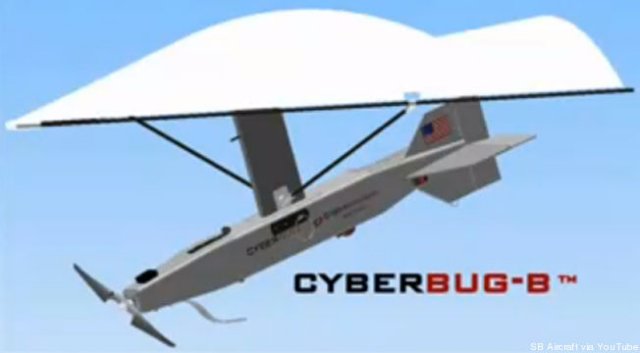When the Gaston County Police Department purchased a “CyberBug” in 2006 for $30,000 from Cyber Defense Systems, Inc., with the help of a grant from the Department of Homeland Security, it had hoped to use the 14-pound unmanned aircraft to assist with police work in the small North Carolina town.
The CyberBug, which comes equipped with low-light infrared cameras and is guided by a GPS system, and is capable of taking pictures and video from overhead up to 1300 feet high.
The police had intended to use the CyberBug for “routine surveillance, lost persons, tactical operations, open area drug eradication, and overhead crime scene photography,” according to Assistant Chief Jeff Isenhour, as quoted in a press release from Cyber Defense Systems at the time.
But if the Gaston County PD planned to put its drone to any similar use, they were thwarted by the Aircraft Owners and Pilots Association (AOPA). The AOPA, upon learning that the police were piloting the drone without a license, alerted the FAA, who keeps tabs on domestic drone use. At first, according to an AOPA blog post, the FAA said it didn’t have the authority to stop the police from flying the drone. But after some pressure, the FAA got the GCPD to stop flying the drone above 400 feet.
In late 2010, the FAA tightened its regulations on the use of UAS by non-military agencies for safety reasons. This left the Gaston County P.D. wrangled in formal applications and procedural paperwork. Unable to secure the proper permit, the aircraft was eventually grounded and left collecting dust in a police storage facility.
“It’ll just keep sitting there until we get permission,” former Gaston County Police Chief William Farley said at the time. “I get sad just thinking about it.”
But this problem may be solved with the new, looser regulations set to be released this year, thanks to the expedited timeline mandated by the FAA Authorization Act. The legislation requires the FAA to expand the list of who can operate unmanned aircraft, and where and when they can be flown. “A government public safety agency” will be able to operate UAS of a certain size as long as certain safety conditions are met. And the FAA is also now required “to safely accelerate the integration of civil unmanned aircraft systems into the national airspace system.”
But, even if the Gaston PD can get authorised at this point, it’s too late for the poor, outdated CyberBug. “It was tough dealing with all the permits,” said Assistant Police Chief J.D. Ramey, “but now that it’s been grounded for so long, the CyberBug is virtually obsolete.
“Compared to all the other unmanned aircraft out there, ours has really aged. If we’d want to ever do any real patrols, we’d have to upgrade to more advanced technology.”
Sources: TPM Muckraker, Gaston Gazette

